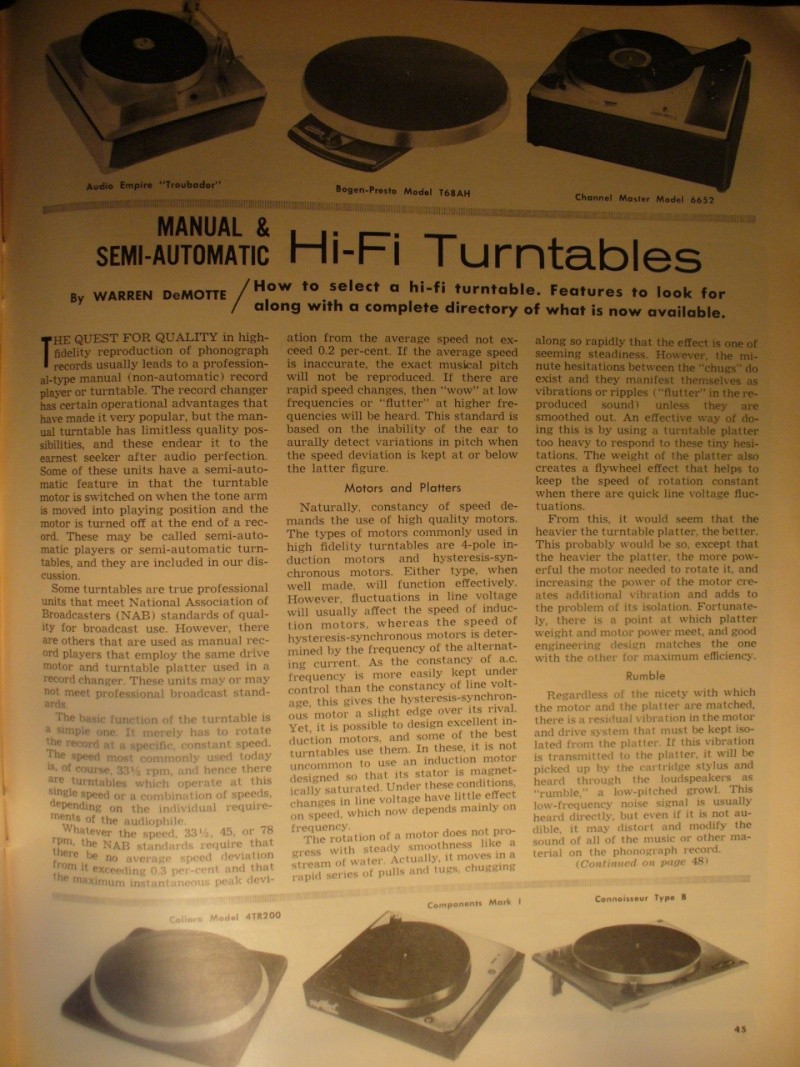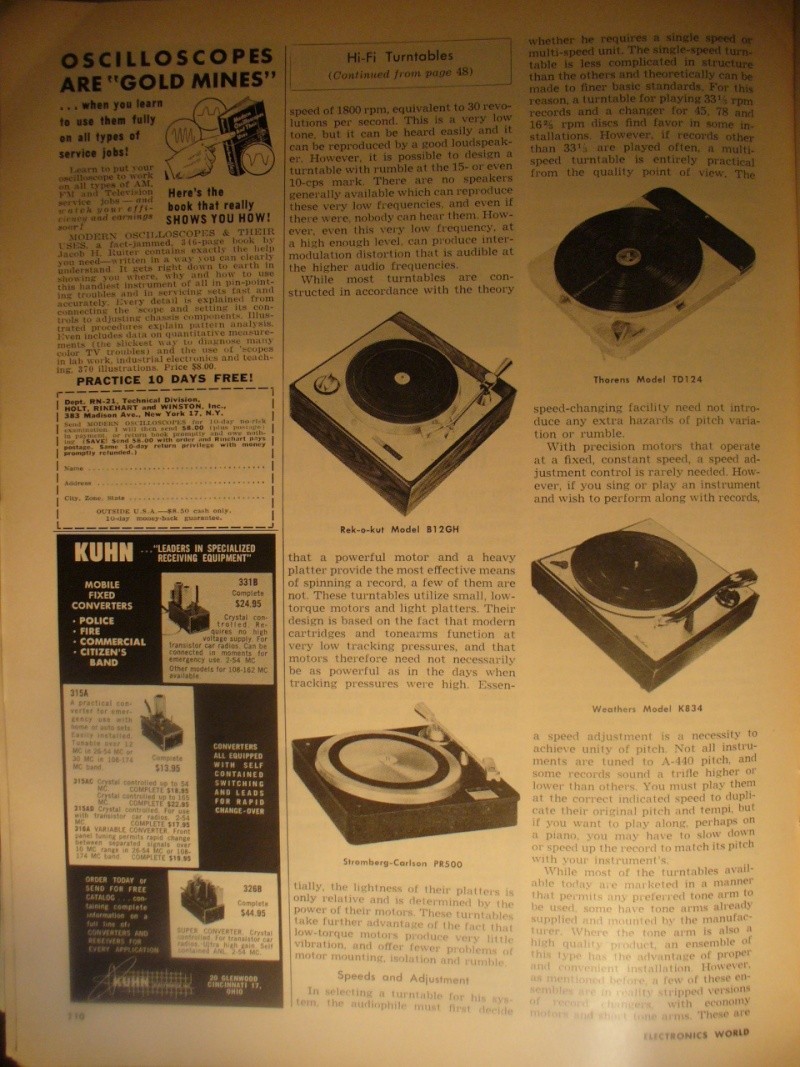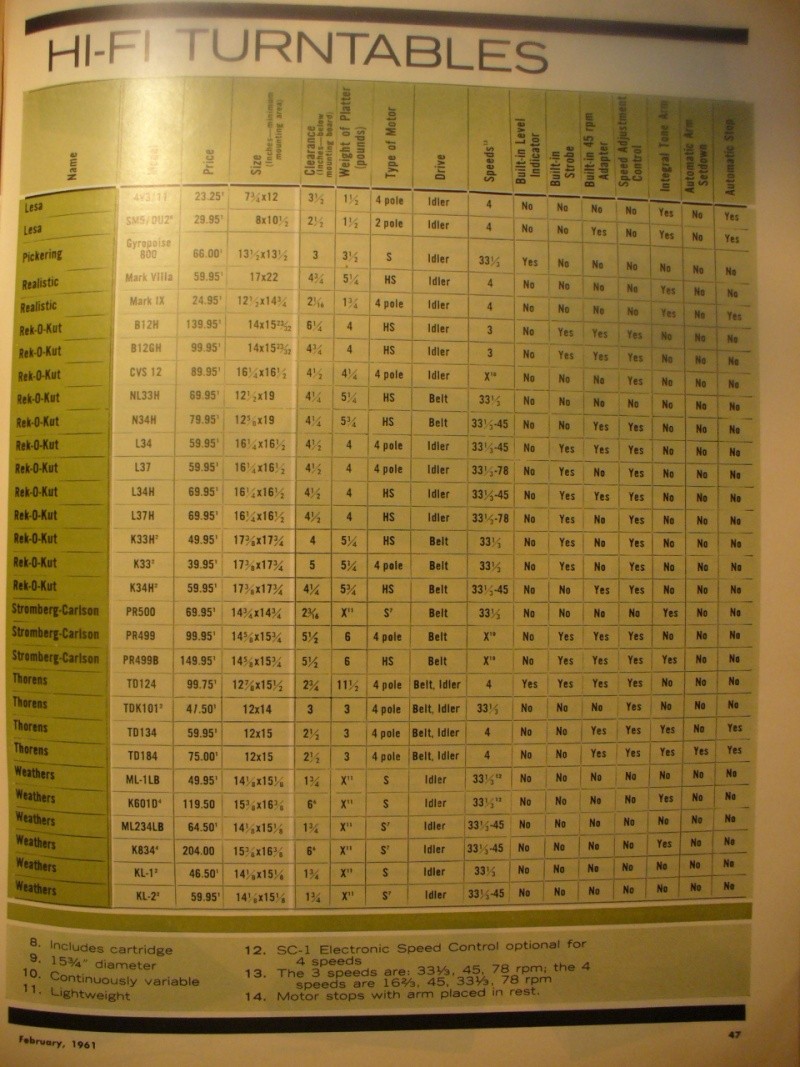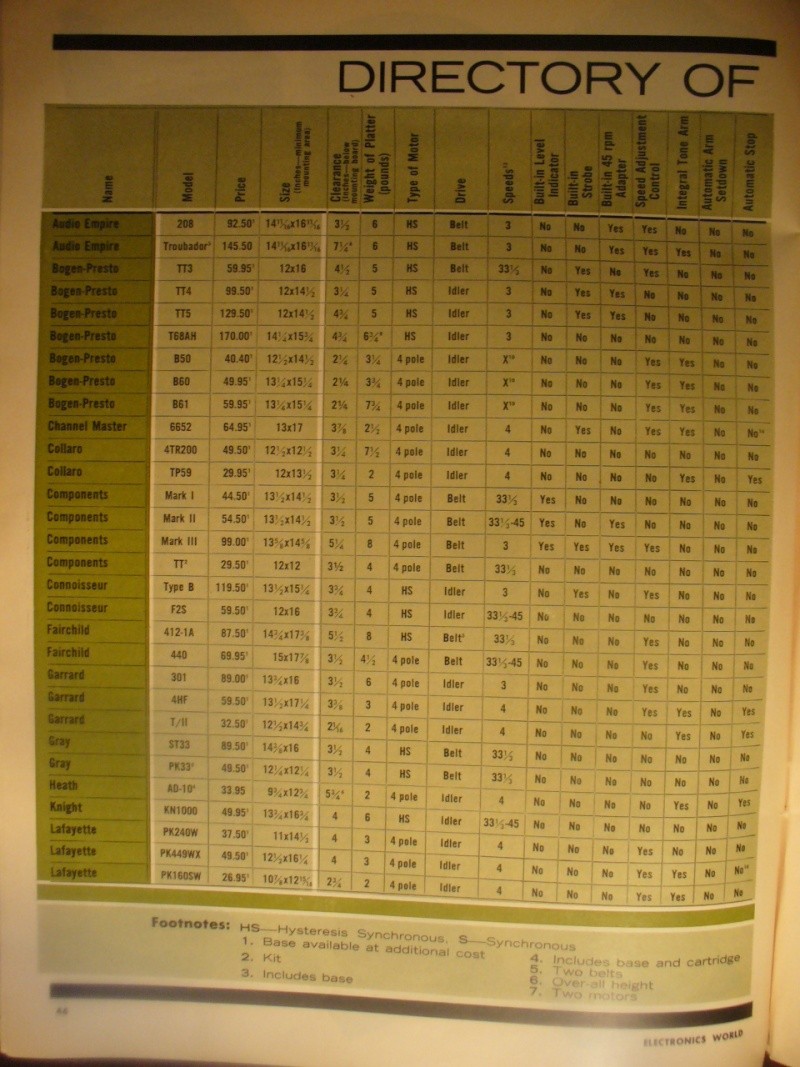Вход
Поиск
Последние темы
» Продам зі зберігання конденсатори К73-11.автор griti Пт 3 Май 2024 - 16:42
» Продам складського зберігання конденсатори МБМ .
автор griti Чт 2 Май 2024 - 14:30
» Продам зі зберігання конденсатори КБГ-МН.
автор griti Пн 29 Апр 2024 - 16:29
» Продам зі зберігання конденсатори ВЗР ЭГЦ.
автор griti Вс 28 Апр 2024 - 9:23
» Продам зі зберігання конденсатори МБГО-2 2мкФ 300 В.
автор griti Сб 13 Апр 2024 - 8:45
» Продам межблочный кабель Van Den Hul - The First, первой серии.
автор iogan Чт 4 Янв 2024 - 11:18
» Продам акустический кабель Van Den Hul.
автор iogan Чт 4 Янв 2024 - 11:16
» Продам акустику ENERGY CF-70 , филиал акустической фирмы KLIPSCH.
автор iogan Чт 4 Янв 2024 - 11:14
» Продам великолепную вертушку винила DENON DP-500M.
автор iogan Чт 4 Янв 2024 - 11:11
» Продам усилитель Luxman L-308.
автор iogan Чт 4 Янв 2024 - 11:10
» Продам акустический кабель AudioQuest Indigo+
автор grbtsv.s Чт 23 Ноя 2023 - 17:20
» Продам акустический кабель XLO HT PRO 12
автор iogan Ср 18 Окт 2023 - 20:55
» Продам межблочные кабеля Cosmic Audio.
автор iogan Ср 18 Окт 2023 - 20:45
» выбираю усилитель luxman
автор iogan Ср 18 Окт 2023 - 20:43
» FX-Audio DAC-X6 MKII
автор Doktor5775 Ср 13 Сен 2023 - 8:18
» Как востановить тему
автор SavchukMusic Пн 11 Сен 2023 - 11:55
» Продам радиолампы, советские и импортные, панельки, колпачки, демпферные кольца...
автор Dialectic Вс 3 Сен 2023 - 12:14
» Конденсаторы К50-И8
автор Mekatar Пт 1 Сен 2023 - 0:57
Статья фром Electronics world feb.1961
Hi Fi форум DIY аудио форум Аудиопортал ::  Авторские форумы наших участников ::
Авторские форумы наших участников ::  Форум Виктора А Шапкина ::
Форум Виктора А Шапкина ::  Материалы
Материалы
Страница 1 из 1 • Поделиться
 Статья фром Electronics world feb.1961
Статья фром Electronics world feb.1961
Приветствую!)Собственно статья.С таблицей,я думаю... интересно.Ссори за качество.










 Re: Статья фром Electronics world feb.1961
Re: Статья фром Electronics world feb.1961
Друзья,для удобства .Текст.
THE QUEST FOR QUALITY in high-fidelity reproduction of phonograph records usually leads to a profession¬al-type manual (non-automatic) record player or turntable. The record changer has certain operational advantages that have made it very popular, but the man¬ual turntable has limitless quality pos¬sibilities, and these endear it to the earnest seeker after audio perfection. Some of these units have a semi-auto¬matic feature in that the turntable motor is switched on when the tone arm is moved into playing position and the motor is turned off at the end of a rec¬ord. These may be called semi-auto¬matic players or semi-automatic turn¬tables, and they are included in our dis¬cussion.
Some turntables are true professional units that meet National Association of Broadcasters (NAB) standards of qual¬ity for broadcast use. However, there are others that are used as manual rec¬ord players that employ the same drive motor and turntable platter used in a record changer. These units may or may not meet professional broadcast stand¬ards.
The basic function of the turntable is a simple one. It merely has to rotate the record at a specific, constant speed. The speed most commonly used today is, of course, 33% rpm, and hence there are turntables which operate at this single speed or a combination of speeds, depending on the individual require¬ments of the audiophile.
Whatever the speed, 33%, 45, or 78 rpm, the NAB standards require that there be no average speed deviation from it exceeding 0.3 per-cent and that the maximum instantaneous peak deviation from the average speed not ex¬ceed 0.2 per-cent. If the average speed is inaccurate, the exact musical pitch will not be reproduced. If there are rapid speed changes, then "wow" at low frequencies or "flutter" at higher fre¬quencies will be heard. This standard is based on the inability of the ear to aurally detect variations in pitch when the speed deviation is kept at or below the latter figure.
Motors and Platters
Naturally, constancy of speed de¬mands the use of high quality motors. The types of motors commonly used in high fidelity turntables are 4-pole in¬duction motors and hysteresis-syn¬chronous motors. Either type, when well made, will function effectively. However, fluctuations in line voltage will usually affect the speed of induc¬tion motors, whereas the speed of hysteresis-synchronous motors is deter¬mined by the frequency of the alternat¬ing current. As the constancy of a.c. frequency is more easily kept under control than the constancy of line volt¬age, this gives the hysteresis-synchron¬ous motor a slight edge over its rival. Yet, it is possible to design excellent in¬duction motors, and some of the best turntables use them. In these, it is not uncommon to use an induction motor designed so that its stator is magnet¬ically saturated. Under these conditions, changes in line voltage have little effect on speed, which now depends mainly on frequency.
The rotation of a motor does not pro¬gress with steady smoothness like a stream of water. Actually, it moves in a rapid series of pulls and tugs, chugging
along so rapidly that the effect is one of seeming steadiness. However, the mi¬nute hesitations between the "chugs" do exist and they manifest themselves as vibrations or ripples ("flutter" in the re¬produced sound) unless they are smoothed out. An effective way of do¬ing this is by using a turntable platter too heavy to respond to these tiny hesi¬tations. The weight of the platter also creates a flywheel effect that helps to keep the speed of rotation constant when there are quick line voltage fluc¬tuations.
From this, it would seem that the heavier the turntable platter, the better. This probably would be so, except that the heavier the platter, the more powerful the motor needed to rotate it, and increasing the power of the motor cre¬ates additional vibration and adds to the problem of its isolation. Fortunate¬ly, there is a point at which platter weight and motor power meet, and good engineering design matches the one with the other for maximum efficiency.
Rumble
Regardless of the nicety with which the motor and the platter are matched, there is a residual vibration in the motor and drive system that must be kept iso¬lated from the platter. If this vibration is transmitted to the platter, it will be picked up by the cartridge stylus and heard through the loudspeakers a: "rumble," a low-pitched growl. This low-frequency noise signal is usually heard directly, but even if it is not au¬dible, it may distort and modify the sound of all of the music or other ma¬terial on the phonograph record. (Continued on page 48)
The NAB standards state that when playing a silent groove test record, rumble should be at least 35 db below the reference level of 1.4 cm. per sec. peak velocity at 100 cps. This reference level is equal to 7 cm. per sec. at 500 cps and roughly 7 cm. per sec. at 1000 cps.
While this style of rumble measure¬ment has been adopted by most manu¬facturers, there are a few whose speci¬fications read "35 (or more) db below average recording level." Unfortunately, this "average recording level" is not specified, so for all practical purposes, the rumble specification thus stated has little exact meaning. It may be men¬tioned here that one manufacturer of quality turntables has suggested that a more meaningful rumble statistic than that set forth by the NAB would be the amplitude of rumble vibration as meas¬ured in millionths of an inch. However, this is a matter for the engineers to argue.
It is much harder for a record changer to meet this rumble standard, because of its added mechanism needed for automatic operation, than it is for a good manual or semi-automatic turn¬table. If this standard is not met, and good loudspeakers are employed in the
audio system, the rumble filter will probably have to be switched on when records are played, with a concomitant loss of desirable bass tones. It is axio¬matic, that the better the speakers and the more capable they are of producing clean, deep bass, the more prominent will be the rumble—if it exists. Hence, the better the related audio equipment, the more necessary a high-grade, rumble-free turntable.
Rumble is fought in many ways and on many fronts. The way the motor is mounted and motion transmitted to the platter is of prime importance. Springs or rubber are used to isolate the motor mounting board from the rotating plat¬ter. Motion is transmitted from the shaft of the motor to the platter by means of pulleys, idler wheels, and drive belts, carefully calculated and fabri¬cated. Each method can be made effec¬tive and each has its adherents. Which¬ever is used, important consideration is given to its ability to filter out vibration rather than transmit it.
The motor must not be held solely responsible for all of the rumble that may enter the system. The manner in which the turntable platter is mounted can also contribute a substantial
amount. It is imperative that the plat¬ter turn freely, with little friction. The turntable shaft must fit in its bearing snugly, without any play, yet with per¬fect freedom of rotational movement. To minimize friction, the shaft may be supported by a ball and the ball may sit in a nylon seat. Again, there must be no looseness in the fit or the ball will wobble, with the result that there will be an eventual increase in friction and a loss in the trueness of rotation.
The platter itself must be well ma¬chined so that the rim is concentric with the shaft. It must be well balanced so that when it rotates, it remains level and there is no wobble and a minimum of up and down movement on the tone-arm. Some platters are machined with exceptional care, with the ultimate bal¬ancing individually accomplished by means of holes drilled underneath the rim in order to distribute weight evenly. Such a refinement of construction may well result in smoother rotation.
Another method of minimizing rumble is to bring its tonal frequency down be¬low normal hearing ability. Most rumble is at the 30-cps frequency. This is the result of using the very common motor (Continued on page 110)
Hi-Fi Turntables
(Continued from page 48)
speed of 1800 rpm, equivalent to 30 revo¬lutions per second. This is a very low tone, but it can be heard easily and it can be reproduced by a good loudspeak¬er. However, it is possible to design a turntable with rumble at the 15- or even 10-cps mark. There are no speakers generally available which can reproduce these very low frequencies, and even if there were, nobody can hear them. How¬ever, even this very low frequency, at a high enough level, can produce inter-modulation distortion that is audible at the higher audio frequencies.
While most turntables are con¬structed in accordance with the theory
that a powerful motor and a heavy platter provide the most effective means of spinning a record, a few of them are not. These turntables utilize small, low-torque motors and light platters. Their design is based on the fact that modern cartridges and tonearms function at very low tracking pressures, and that motors therefore need not necessarily be as powerful as in the days when tracking pressures were high. Essentially, the lightness of their platters is only relative and js determined by the power of their motors. These turntables take further advantage of the fact that low-torque motors produce very little vibration, and offer fewer problems of motor mounting, isolation and rumble.
Speeds and Adjustment
In selecting a turntable for his sys¬tem, the audiophile must first decide
whether he requires a single speed or multi-speed unit. The single-speed turn¬table is less complicated in structure than the others and theoretically can be made to finer basic standards. For this reason, a turntable for playing 33% rpm records and a changer for 45, 78 and 16% rpm discs find favor in some in¬stallations. However, if records other than 33]3 are played often, a multi-speed turntable is entirely practical from the quality point of view. The
speed-changing facility need not intro¬duce any extra hazards of pitch varia¬tion or rumble.
With precision motors that operate at a fixed, constant speed, a speed ad¬justment control is rarely needed. How¬ever, if you sing or play an instrument and wish to perform along with records,
a speed adjustment is a necessity to achieve unity of pitch. Not all instru¬ments are tuned to A-440 pitch, and some records sound a trifle higher or lower than others. You must play them at the correct indicated speed to dupli¬cate their original pitch and tempi, but if you want to play along, perhaps on a piano, you may have to slow down or speed up the record to match its pitch with your instrument's.
While most of the turntables avail¬able today are marketed in a manner that permits any preferred tone arm to be used, some have tone arms already supplied and mounted by the manufac¬turer. Where the tone arm is also a high quality product, an ensemble of this type has the advantage of proper and convenient installation. However, as mentioned before, a few of these en¬sembles are in reality stripped versions of record changers, with economy motors and short tone arms. These are not in the same class as professional type turntables and tone arms.
We would also like to point out that manufacturers of record changers that are able to play single records manually could refer to their units as "automatic turntables." As a matter of fact, one manufacturer has gone so far as to in¬clude a dynamically balanced tone arm and a weighted platter in a player that also incorporates the automatic-play feature of a record changer.
Simple Tests
It is, of course, impossible for the audiophile to make his own laboratory tests on individual turntables when he is shopping for one. He can. however, be guided by manufacturers' specifications and he should not hesitate to avail him¬self of the salesman's knowledge and experience. The salesman can usually suggest a turntable that is compatible with the type of amplifier and speakers with which it will be used.
If possible the turntable recom¬mended by the salesman or requested by the audiophile should be hooked up with an amplifier and speakers similar to those he owns, and tried out in the store.
Place a stroboscope on the turntable and check the accuracy of speed. Some turntables have built-in strobe discs. Do this again while a record is playing so that you know whether speed is main¬tained under operating conditions. (To meet professional broadcast standards, not more than 21 bars on the strobe disc should appear to move past a given point in one minute.) Listen to a record or two. Solo piano records provide ex¬cellent test material. The tones should be firm, steady and clear, not wavery or fuzzy. Turn the volume up and boost the bass to determine how much rumble the turntable produces.
If the piano tones are pleasing and the rumble is not noticeable or objec¬tionable at fairly high volume with the bass emphasized, you have a good turn¬table. It will enable your records to be played with maximum fidelity and min¬imum distortion and thereby provide you with maximum pleasure and min¬imum frustration.
THE QUEST FOR QUALITY in high-fidelity reproduction of phonograph records usually leads to a profession¬al-type manual (non-automatic) record player or turntable. The record changer has certain operational advantages that have made it very popular, but the man¬ual turntable has limitless quality pos¬sibilities, and these endear it to the earnest seeker after audio perfection. Some of these units have a semi-auto¬matic feature in that the turntable motor is switched on when the tone arm is moved into playing position and the motor is turned off at the end of a rec¬ord. These may be called semi-auto¬matic players or semi-automatic turn¬tables, and they are included in our dis¬cussion.
Some turntables are true professional units that meet National Association of Broadcasters (NAB) standards of qual¬ity for broadcast use. However, there are others that are used as manual rec¬ord players that employ the same drive motor and turntable platter used in a record changer. These units may or may not meet professional broadcast stand¬ards.
The basic function of the turntable is a simple one. It merely has to rotate the record at a specific, constant speed. The speed most commonly used today is, of course, 33% rpm, and hence there are turntables which operate at this single speed or a combination of speeds, depending on the individual require¬ments of the audiophile.
Whatever the speed, 33%, 45, or 78 rpm, the NAB standards require that there be no average speed deviation from it exceeding 0.3 per-cent and that the maximum instantaneous peak deviation from the average speed not ex¬ceed 0.2 per-cent. If the average speed is inaccurate, the exact musical pitch will not be reproduced. If there are rapid speed changes, then "wow" at low frequencies or "flutter" at higher fre¬quencies will be heard. This standard is based on the inability of the ear to aurally detect variations in pitch when the speed deviation is kept at or below the latter figure.
Motors and Platters
Naturally, constancy of speed de¬mands the use of high quality motors. The types of motors commonly used in high fidelity turntables are 4-pole in¬duction motors and hysteresis-syn¬chronous motors. Either type, when well made, will function effectively. However, fluctuations in line voltage will usually affect the speed of induc¬tion motors, whereas the speed of hysteresis-synchronous motors is deter¬mined by the frequency of the alternat¬ing current. As the constancy of a.c. frequency is more easily kept under control than the constancy of line volt¬age, this gives the hysteresis-synchron¬ous motor a slight edge over its rival. Yet, it is possible to design excellent in¬duction motors, and some of the best turntables use them. In these, it is not uncommon to use an induction motor designed so that its stator is magnet¬ically saturated. Under these conditions, changes in line voltage have little effect on speed, which now depends mainly on frequency.
The rotation of a motor does not pro¬gress with steady smoothness like a stream of water. Actually, it moves in a rapid series of pulls and tugs, chugging
along so rapidly that the effect is one of seeming steadiness. However, the mi¬nute hesitations between the "chugs" do exist and they manifest themselves as vibrations or ripples ("flutter" in the re¬produced sound) unless they are smoothed out. An effective way of do¬ing this is by using a turntable platter too heavy to respond to these tiny hesi¬tations. The weight of the platter also creates a flywheel effect that helps to keep the speed of rotation constant when there are quick line voltage fluc¬tuations.
From this, it would seem that the heavier the turntable platter, the better. This probably would be so, except that the heavier the platter, the more powerful the motor needed to rotate it, and increasing the power of the motor cre¬ates additional vibration and adds to the problem of its isolation. Fortunate¬ly, there is a point at which platter weight and motor power meet, and good engineering design matches the one with the other for maximum efficiency.
Rumble
Regardless of the nicety with which the motor and the platter are matched, there is a residual vibration in the motor and drive system that must be kept iso¬lated from the platter. If this vibration is transmitted to the platter, it will be picked up by the cartridge stylus and heard through the loudspeakers a: "rumble," a low-pitched growl. This low-frequency noise signal is usually heard directly, but even if it is not au¬dible, it may distort and modify the sound of all of the music or other ma¬terial on the phonograph record. (Continued on page 48)
The NAB standards state that when playing a silent groove test record, rumble should be at least 35 db below the reference level of 1.4 cm. per sec. peak velocity at 100 cps. This reference level is equal to 7 cm. per sec. at 500 cps and roughly 7 cm. per sec. at 1000 cps.
While this style of rumble measure¬ment has been adopted by most manu¬facturers, there are a few whose speci¬fications read "35 (or more) db below average recording level." Unfortunately, this "average recording level" is not specified, so for all practical purposes, the rumble specification thus stated has little exact meaning. It may be men¬tioned here that one manufacturer of quality turntables has suggested that a more meaningful rumble statistic than that set forth by the NAB would be the amplitude of rumble vibration as meas¬ured in millionths of an inch. However, this is a matter for the engineers to argue.
It is much harder for a record changer to meet this rumble standard, because of its added mechanism needed for automatic operation, than it is for a good manual or semi-automatic turn¬table. If this standard is not met, and good loudspeakers are employed in the
audio system, the rumble filter will probably have to be switched on when records are played, with a concomitant loss of desirable bass tones. It is axio¬matic, that the better the speakers and the more capable they are of producing clean, deep bass, the more prominent will be the rumble—if it exists. Hence, the better the related audio equipment, the more necessary a high-grade, rumble-free turntable.
Rumble is fought in many ways and on many fronts. The way the motor is mounted and motion transmitted to the platter is of prime importance. Springs or rubber are used to isolate the motor mounting board from the rotating plat¬ter. Motion is transmitted from the shaft of the motor to the platter by means of pulleys, idler wheels, and drive belts, carefully calculated and fabri¬cated. Each method can be made effec¬tive and each has its adherents. Which¬ever is used, important consideration is given to its ability to filter out vibration rather than transmit it.
The motor must not be held solely responsible for all of the rumble that may enter the system. The manner in which the turntable platter is mounted can also contribute a substantial
amount. It is imperative that the plat¬ter turn freely, with little friction. The turntable shaft must fit in its bearing snugly, without any play, yet with per¬fect freedom of rotational movement. To minimize friction, the shaft may be supported by a ball and the ball may sit in a nylon seat. Again, there must be no looseness in the fit or the ball will wobble, with the result that there will be an eventual increase in friction and a loss in the trueness of rotation.
The platter itself must be well ma¬chined so that the rim is concentric with the shaft. It must be well balanced so that when it rotates, it remains level and there is no wobble and a minimum of up and down movement on the tone-arm. Some platters are machined with exceptional care, with the ultimate bal¬ancing individually accomplished by means of holes drilled underneath the rim in order to distribute weight evenly. Such a refinement of construction may well result in smoother rotation.
Another method of minimizing rumble is to bring its tonal frequency down be¬low normal hearing ability. Most rumble is at the 30-cps frequency. This is the result of using the very common motor (Continued on page 110)
Hi-Fi Turntables
(Continued from page 48)
speed of 1800 rpm, equivalent to 30 revo¬lutions per second. This is a very low tone, but it can be heard easily and it can be reproduced by a good loudspeak¬er. However, it is possible to design a turntable with rumble at the 15- or even 10-cps mark. There are no speakers generally available which can reproduce these very low frequencies, and even if there were, nobody can hear them. How¬ever, even this very low frequency, at a high enough level, can produce inter-modulation distortion that is audible at the higher audio frequencies.
While most turntables are con¬structed in accordance with the theory
that a powerful motor and a heavy platter provide the most effective means of spinning a record, a few of them are not. These turntables utilize small, low-torque motors and light platters. Their design is based on the fact that modern cartridges and tonearms function at very low tracking pressures, and that motors therefore need not necessarily be as powerful as in the days when tracking pressures were high. Essentially, the lightness of their platters is only relative and js determined by the power of their motors. These turntables take further advantage of the fact that low-torque motors produce very little vibration, and offer fewer problems of motor mounting, isolation and rumble.
Speeds and Adjustment
In selecting a turntable for his sys¬tem, the audiophile must first decide
whether he requires a single speed or multi-speed unit. The single-speed turn¬table is less complicated in structure than the others and theoretically can be made to finer basic standards. For this reason, a turntable for playing 33% rpm records and a changer for 45, 78 and 16% rpm discs find favor in some in¬stallations. However, if records other than 33]3 are played often, a multi-speed turntable is entirely practical from the quality point of view. The
speed-changing facility need not intro¬duce any extra hazards of pitch varia¬tion or rumble.
With precision motors that operate at a fixed, constant speed, a speed ad¬justment control is rarely needed. How¬ever, if you sing or play an instrument and wish to perform along with records,
a speed adjustment is a necessity to achieve unity of pitch. Not all instru¬ments are tuned to A-440 pitch, and some records sound a trifle higher or lower than others. You must play them at the correct indicated speed to dupli¬cate their original pitch and tempi, but if you want to play along, perhaps on a piano, you may have to slow down or speed up the record to match its pitch with your instrument's.
While most of the turntables avail¬able today are marketed in a manner that permits any preferred tone arm to be used, some have tone arms already supplied and mounted by the manufac¬turer. Where the tone arm is also a high quality product, an ensemble of this type has the advantage of proper and convenient installation. However, as mentioned before, a few of these en¬sembles are in reality stripped versions of record changers, with economy motors and short tone arms. These are not in the same class as professional type turntables and tone arms.
We would also like to point out that manufacturers of record changers that are able to play single records manually could refer to their units as "automatic turntables." As a matter of fact, one manufacturer has gone so far as to in¬clude a dynamically balanced tone arm and a weighted platter in a player that also incorporates the automatic-play feature of a record changer.
Simple Tests
It is, of course, impossible for the audiophile to make his own laboratory tests on individual turntables when he is shopping for one. He can. however, be guided by manufacturers' specifications and he should not hesitate to avail him¬self of the salesman's knowledge and experience. The salesman can usually suggest a turntable that is compatible with the type of amplifier and speakers with which it will be used.
If possible the turntable recom¬mended by the salesman or requested by the audiophile should be hooked up with an amplifier and speakers similar to those he owns, and tried out in the store.
Place a stroboscope on the turntable and check the accuracy of speed. Some turntables have built-in strobe discs. Do this again while a record is playing so that you know whether speed is main¬tained under operating conditions. (To meet professional broadcast standards, not more than 21 bars on the strobe disc should appear to move past a given point in one minute.) Listen to a record or two. Solo piano records provide ex¬cellent test material. The tones should be firm, steady and clear, not wavery or fuzzy. Turn the volume up and boost the bass to determine how much rumble the turntable produces.
If the piano tones are pleasing and the rumble is not noticeable or objec¬tionable at fairly high volume with the bass emphasized, you have a good turn¬table. It will enable your records to be played with maximum fidelity and min¬imum distortion and thereby provide you with maximum pleasure and min¬imum frustration.
Hi Fi форум DIY аудио форум Аудиопортал ::  Авторские форумы наших участников ::
Авторские форумы наших участников ::  Форум Виктора А Шапкина ::
Форум Виктора А Шапкина ::  Материалы
Материалы
Страница 1 из 1
Права доступа к этому форуму:
Вы не можете отвечать на сообщения|
|
|
